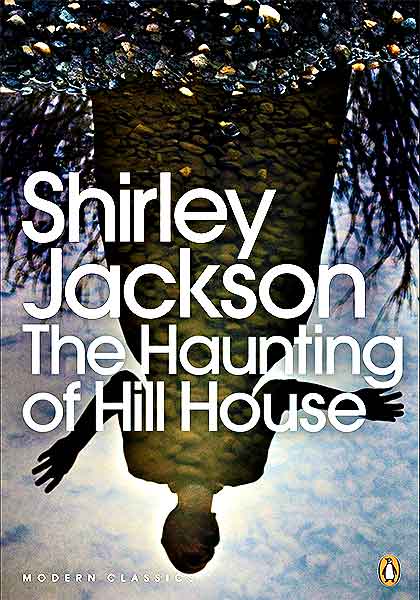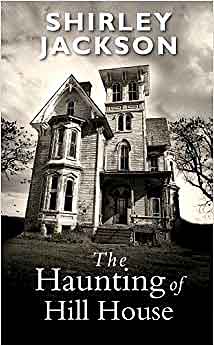 By SHIRLEY JACKSON (Penguin Classics; 1959)
By SHIRLEY JACKSON (Penguin Classics; 1959)
This is one of the classic horror novels, written by one of the genre’s most singular talents. By today’s standards it qualifies as a work of “quiet” horror, and to these eyes seems more a dark-hued character study than a proper genre novel. I’ll confess I don’t find it particularly scary (all the crappy haunted house stories I’ve been subjected to over the years have likely ruined the form for me) nor the best work of Shirley Jackson (which in my view would be “THE LOTTERY” or WE HAVE ALWAYS LIVED IN THE CASTLE), yet there’s an excellent reason THE HAUNTING OF HILL HOUSE is held in such high regard now, over fifty years after its initial publication.
This is one of the classic horror novels, written by one of the genre’s most singular talents.
It’s an unfailingly literate and refined tale, and one of the few horror novels that can stand with the finest works of literature of any stripe. This doesn’t make for a particularly jazzy or enjoyable reading experience–it’s a rare example of a good-for-you horror story—but the novel’s qualities are undeniable.
As with quite a few haunted house tales, we have an ill-advised experiment involving group of intrepid folk showing up at just such an abode to stay for several days. The secluded New England based Hill House has a dark history involving several generations of an apparently cursed family afflicted with all manner of madness and murder. Since then Hill House has stood largely empty, with the few people who’ve deigned to stay there never doing so for more than a few days. In this secluded environ, as the novel’s famous opening line states, “silence lay steadily against the wood and stone of Hill House, and whatever walked there, walked alone.”
It’s an unfailingly literate and refined tale, and one of the few horror novels that can stand with the finest works of literature of any stripe.
Those words would seem to apply especially to Eleanor, a mousy homeless woman who’s one of three people summoned to Hill House as part of the aforementioned experiment. The others are the attractive Theodora, a psychic and apparent lesbian (who lives with an unidentified “friend”), Luke, a young stud who stands to inherit Hill House, and Dr. Montague, who organizes the experiment. It’s Eleanor, however, who provides the novel’s center, and becomes the nexus of the haunting.
 Hill House’s shenanigans include all the usual haunted house jazz–sudden unexplained chills, unseen pounding and voices—yet it all seems directed toward Eleanor. This includes the writing that appears on walls reading “HELP ELEANOR COME HOME,” which especially unnerves Eleanor, as she really doesn’t want to be the center of attention. It’s been argued that the entire story may be a fantasy or hallucination experienced by the unstable Eleanor, but Shirley Jackson has claimed otherwise (although according to Nelson Gidding, who scripted the 1963 film version, Jackson conceded that a purely psychological approach to the story was “a damn good idea”).
Hill House’s shenanigans include all the usual haunted house jazz–sudden unexplained chills, unseen pounding and voices—yet it all seems directed toward Eleanor. This includes the writing that appears on walls reading “HELP ELEANOR COME HOME,” which especially unnerves Eleanor, as she really doesn’t want to be the center of attention. It’s been argued that the entire story may be a fantasy or hallucination experienced by the unstable Eleanor, but Shirley Jackson has claimed otherwise (although according to Nelson Gidding, who scripted the 1963 film version, Jackson conceded that a purely psychological approach to the story was “a damn good idea”).
The novel’s final third is largely focused on Eleanor’s psychological disintegration. This makes her a burden to her companions and increases her isolation. It’s hardly a surprise that she grows to enjoy life in Hill House, or that she eventually becomes part of it (I won’t reveal how). The novel concludes with a repeat of the now-poignant line “whatever walked there, walked alone.” Even as a ghost, it seems, poor Eleanor has no friends.
See also: THE HAUNTING (1963)
